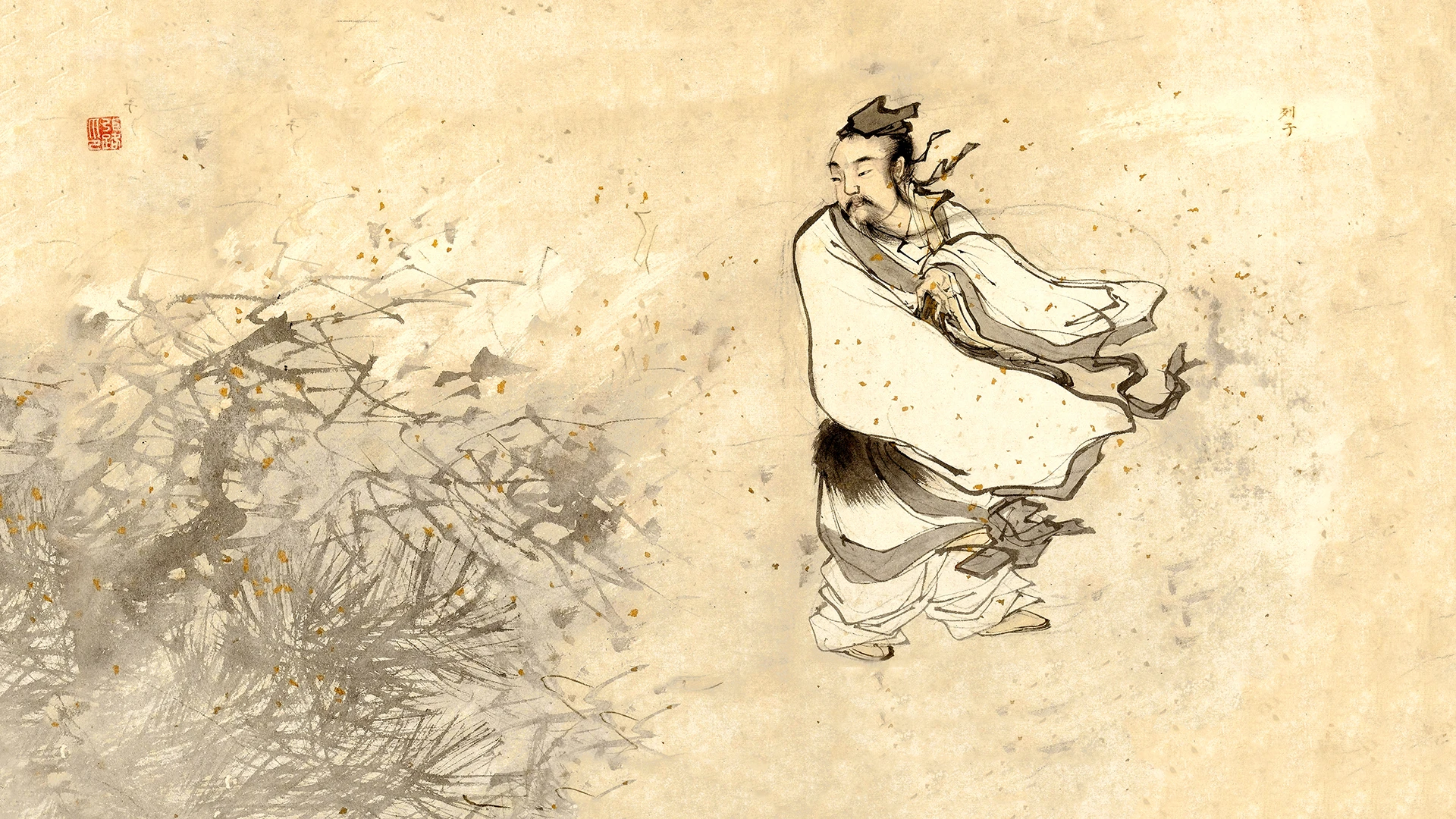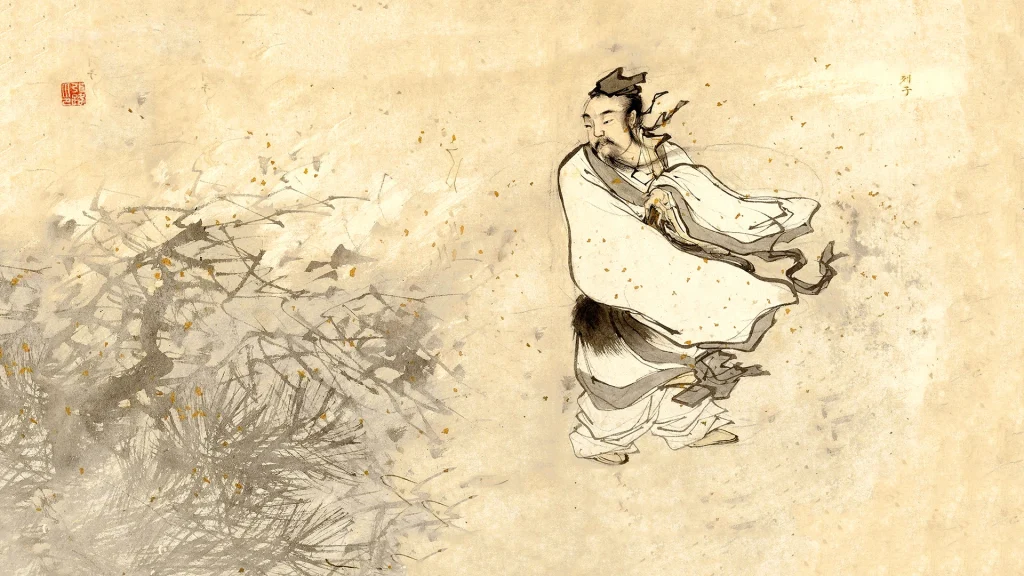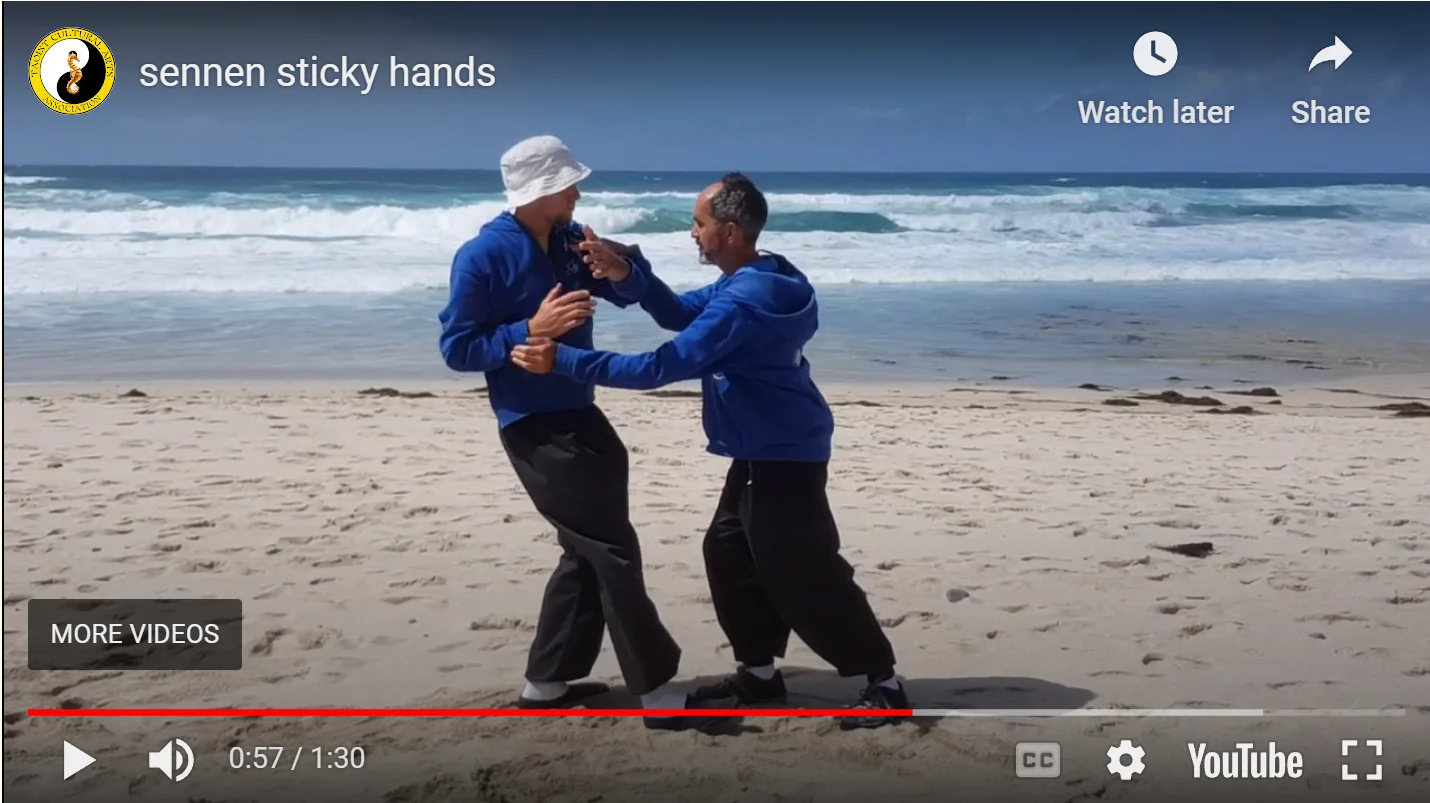Chris and James from the Cornwall clubs were invited to BBC Radio Cornwall in Truro last week to talk to Tiffany Truscott about their experiences with Tai Chi.
Chris learned Tai Chi at Chee Soo’s classes in Leamington and Coventry and taught a club for the Students’ Union at The University of Warwick in the 1980s and 1990s.
James took up Tai Chi to help him recover from a traumatic road accident and has now become an instructor opening his own club in his hometown of St Agnes in Cornwall.
Category: Evening classes
-

BBC radio interview
Chris and James from our Cornwall clubs on the BBC -

Wuwei

Liezi riding on the wind Wuwei (无为) often translated as “non-action,” is a fundamental concept in Taoist philosophy and has an important role in the practice of Tai Chi. While it may sound like doing nothing, wuwei is actually a way of acting without forcing or interfering with natural processes. In this blog post, we will explore the concept of wuwei and its significance in Tai Chi, drawing on the works of ancient Taoist philosophers such as Liezi, Zhuangzi, and Laozi.
Understanding Wuwei
At its core, wuwei is about letting go of our ego and allowing things to unfold naturally, without our intervention. It involves being in a state of awareness, so we can respond to situations appropriately without creating resistance or conflict. It’s not about being passive, but rather actively engaging with the world around us in a way that is aligned with the flow of nature.
According to Taoist philosophy, all things arise from the Tao, or the Way, which is the ultimate reality that transcends all dualities. The Tao is not something that can be described in words, but rather something that can be experienced through direct intuition. It is the source of all life and the underlying order of the universe. To live in harmony with the Tao, we must let go of our desires, judgments, and attachments, and allow ourselves to be guided by the natural order of things.
Wuwei is not just a philosophical concept, but a practical one as well. It can be seen in the way we move, breathe, and interact with others. In Tai Chi, wuwei is embodied in the practice of slow, flowing movements that follow the natural rhythms of the body and breath. The goal is not to force the movements or achieve a specific outcome, but rather to allow the movements to emerge spontaneously from within.
Wuwei in Action
To illustrate the concept of wuwei, let’s look at some stories from ancient Taoist philosophers.
Liezi
In the Liezi 1 there is a story about a butcher named Ding.
One day, a prince came to Ding’s shop and asked him to cut up an ox. Ding did so with ease, using his knife as if it were an extension of his hand. The prince was amazed and asked Ding how he was able to cut up the ox so effortlessly. Ding replied, “I don’t look at the ox with my eyes, but with my mind. My mind tells my hand where to go, and the knife follows. I let go of my ego and allow the natural order of things to guide me.”
This story demonstrates the idea of wuwei as effortless action, where the mind and body are in harmony and work together seamlessly. By letting go of his ego and allowing the natural order of things to guide him, Ding was able to perform his task with ease and skill.
Zhuangzi
In the Zhuangzi 2 there is a story about a man training a fighting cockerel.
There once was a man who wanted his fighting rooster to be more ferocious. He took the rooster to a trainer. In a few weeks’ time he returned and saw that his rooster didn’t squawk as loudly.
“Not ready yet,” said the trainer. Two weeks later he saw that his rooster barely raised his neck feathers and wings.
“Not ready yet,” said the trainer. Another week passed. His rooster looked as tame and docile as a chick.
“You’ve ruined my fine fighting bird!” screamed the man at the trainer.
“Not at all,” the trainer replied, “See how calm and secure he is, how serenely strong he stands today. The other fighting birds take one look at him and they all run away!”
This story illustrates the idea of wuwei as less is more. Rather than making a fuss and drama, calmness and serenity prevails. This is a quality cultivated by the masters of martial arts above all else, to keep your head and avoid panic. To stick to your guns when facing adversity. The other birds cannot fathom the trained bird, they see only nothingness, no fear, no anger, they flee.
Laozi
One example of Wuwei in the Tao Te Ching 3 is in Chapter 17, where it is said:
“The best leaders are those the people hardly know exist. The next best is a leader who is loved and praised. Next comes the one who is feared. The worst one is the leader that is despised.”
This passage suggests that the most effective leaders are those who act with Wuwei, or non-action, by not drawing attention to themselves or forcing their will upon others. Instead, they allow things to unfold naturally and lead by example, without seeking personal glory or control. This way of leading is seen as harmonious and beneficial for both the leader and the people they serve.
Cooking a small fish can also be an example of Wuwei in the Tao Te Ching. In Chapter 64, it is said:
“A kingdom is like a great, low-lying river, The point where all the streams and torrents in the world converge. If you can keep centered and true, The kingdom will be centered and true. With Wuwei, the whole kingdom is refreshed, Without Wuwei, the kingdom becomes weary and oppressed.
Just as a small fish should not be over-handled, The ruler must not over-manage the people with force. In this way, the Tao of Heaven is reflected in the land, And all things flourish without being commanded.”
This passage suggests that just as a small fish should not be over-handled when cooking, a ruler or leader should not try to control or manipulate their people too much. Instead, they should practice Wuwei by allowing things to unfold naturally and trusting in the natural order of things. By doing so, the kingdom will be refreshed and all things will flourish without the need for force or excessive intervention.
Wuwei in Tai Chi
In Tai Chi, wuwei is embodied in the practice of slow, flowing movements that follow the natural rhythms of the body and breath. Rather than trying to force the body into a specific position or movement, Tai Chi practitioners allow the movements to arise spontaneously from within. By doing so, they cultivate a deep sense of awareness and sensitivity to the natural flow of energy within the body and the environment.
Through regular practice of Tai Chi, practitioners can develop a sense of ease and relaxation in their movements, which can help reduce stress and promote overall well-being. Tai Chi has been shown to have a range of health benefits, including improving balance, flexibility, and cardiovascular health, as well as reducing symptoms of anxiety and depression.
Research has also shown that Tai Chi can help reduce inflammation in the body, which has been linked to a range of chronic health conditions, including cardiovascular disease, diabetes, and cancer. In one study, participants who practiced Tai Chi regularly for 12 weeks showed a significant reduction in levels of inflammation compared to a control group.
In addition to the physical benefits, Tai Chi also has a meditative aspect, which can help cultivate a sense of inner peace and calm. By focusing on the movements and the breath, practitioners can quiet the mind and enter a state of deep relaxation. This can be particularly beneficial for those who suffer from anxiety or stress-related disorders.
Wuwei in Daily Life
While Tai Chi is a powerful practice for cultivating wuwei, the principles of non-action can be applied to all areas of our lives. By letting go of our ego and allowing things to unfold naturally, we can reduce stress and create a greater sense of harmony and balance.
One way to incorporate wuwei into daily life is to cultivate awareness. Being aware means being fully present in the moment, without judgment or distraction. By cultivating awareness of our thoughts, feelings, and surroundings, we can learn to respond to situations with greater clarity and equanimity.
Another way to cultivate wuwei is to practice surrender. Surrender involves letting go of our attachment to outcomes and allowing things to unfold as they will. Rather than trying to control every aspect of our lives, we can learn to trust in the natural order of things and allow ourselves to be guided by it.
Finally, it’s important to cultivate a sense of playfulness and curiosity in our lives. By approaching situations with a sense of openness and curiosity, we can learn to let go of our expectations and allow ourselves to be surprised by the unexpected.
Let Nature take its course
Wuwei is a fundamental concept in Taoist philosophy and has an important role in the practice of Tai Chi. It involves letting go of our ego and allowing things to unfold naturally, without our intervention. In Tai Chi, wuwei is embodied in the practice of slow, flowing movements that follow the natural rhythms of the body and breath.
Through regular practice of Tai Chi, practitioners can develop a deep sense of awareness and sensitivity to the natural flow of energy within the body and the environment. This can help reduce stress and promote overall well-being, as well as cultivate a sense of inner peace and calm.
While Tai Chi is a powerful practice for cultivating wuwei, the principles of non-action can be applied to all areas of our lives. By letting go of our ego and allowing things to unfold naturally, we can reduce stress and create a greater sense of harmony and balance. By practicing mindfulness, surrender, and playfulness, we can cultivate a greater sense of ease and relaxation in our lives.
References:
- Liezi. Translated by A.C. Graham. New York: Columbia University Press, 1990.
- Zhuangzi. Translated by Burton Watson. New York: Columbia University Press, 2003.
- Laozi. Tao Te Ching. Translated by Stephen Mitchell. New York: HarperCollins
-

Sticky hands
Sticky hands with Richard and Martin at the Summer Course in Cornwall Tai Chi is a practice that is steeped in Taoist philosophy. The practice involves slow, flowing movements that aim to cultivate internal energy, or qi, and develop a sense of harmony with the universe. One of the most important aspects of Tai Chi is Sticky Hands, also known as Yifu Shou (依附手). In this post, we will explore the techniques involved, how they fit in with Taoist philosophy, and how they exemplify the principle of wuwei.
Understanding the Techniques
Sticky Hands is a two-person exercise that is designed to develop sensitivity to your partner’s movements and respond to them with fluidity and grace. The exercise involves various techniques, including sticking, adhering, listening, and neutralizing. These techniques are essential for mastering the art of sticky hands and becoming a skilled Tai Chi practitioner.
- Sticking
The first technique in sticky hands is unsurprisingly sticking. This involves maintaining contact with your partner’s hands and arms while they move. The goal of sticking is to develop sensitivity to your partner’s energy and movements. By sticking to your partner’s hands, you can sense their movements and respond to them accordingly.
- Adhering
The second technique is adhering. This involves following your partner’s movements while maintaining contact with their hands. Adhering helps you to stay grounded and maintain your balance while responding to your partner’s energy.
- Listening
The third technique is listening. This involves paying attention to your partner’s movements and responding to them accordingly. Listening helps you to stay present and focused on your partner’s energy and movements.
- Neutralizing
The fourth technique is neutralizing. This involves using your partner’s energy to your advantage. By neutralizing your partner’s movements, you can gain the upper hand and respond to their movements with fluidity and grace.
How Sticky Hands Fits in with Taoist Philosophy
Taoist philosophy emphasizes the importance of harmony, balance, and naturalness. These principles are reflected in the practice of Tai Chi and Sticky Hands. Sticky Hands teaches you how to respond to your partner’s movements with fluidity and grace, which reflects the principle of naturalness in Taoist philosophy. By following your partner’s movements and using their energy to your advantage, you can achieve a sense of balance and harmony in your practice.
The Principle of Wuwei in Sticky Hands
Wuwei is a fundamental principle in Taoist philosophy that emphasizes the importance of non-action. It does not mean inaction but means acting effortlessly, without forcing or struggling. In Sticky Hands, the principle of wuwei is reflected in the practice of neutralizing. Neutralizing involves using your partner’s energy to your advantage without using force or struggling. By acting effortlessly, you can achieve a sense of harmony and balance in your practice.
The principle of Softness in Sticky Hands
Remember that softness in Tai Chi has a special meaning that is different from the conventional linguistic understanding of softness, it means using the partner’s energy to achieve your objective of uprooting their balance using their movements instead of your own.
Softness is a core principle in Tai Chi that is often misunderstood as simply being gentle or yielding. In Tai Chi, softness refers to the ability to remain relaxed and pliable while maintaining a sense of stability and centeredness. It is a physical, mental, and emotional state that allows you to move with fluidity and grace, responding to your environment and partners with minimal effort.
In Sticky Hands, the practice of softness is crucial because it enables you to work with a partner and learn how to respond to their movements with ease and efficiency. The principle of softness in Sticky Hands is closely related to the concept of Wu Wei, which translates as “effortless action” or “action without action.” Wu Wei is an important concept in Taoist philosophy and refers to the idea of acting in a way that is aligned with the natural flow of the universe, without imposing your will or forcing outcomes.
Softness in Sticky Hands involves using your partner’s energy and movements to achieve your objective of uprooting their balance, instead of relying solely on your own strength and force. By remaining soft and pliable, you can sense your partner’s movements more accurately and respond to them with minimal effort. Softness allows you to adapt to changing situations and adjust your movements in real time, which is essential in Sticky Hands when working with a partner.
The objective of Sticky Hands is to learn how to neutralize your partner’s force and redirect it with minimal effort. Softness is crucial in push hands because it allows you to sense your partner’s movements and redirect their energy without using excessive force.
In Sticky Hands, softness is not just a physical attribute but also a mental and emotional state. It requires a deep sense of relaxation, receptivity, and non-resistance to be able to respond to your partner’s movements with minimal effort. By developing a sense of softness in your Sticky Hands practice, you can improve your sensitivity, reflexes, and efficiency in your movements. Softness also allows you to work with your partner in a cooperative and non-confrontational way, which is aligned with the principle of Wu Wei in Taoist philosophy. The psychological effect of sticking to the partner tends to neutralize an aggressive force and make the partner withdraw their attack.
In conclusion, Sticky Hands is an essential aspect of Tai Chi that reflects the principles of Taoist philosophy. By practicing the techniques of sticking, adhering, listening, neutralizing, and softness you can develop sensitivity to your partner’s movements and respond to them with fluidity and grace. The practice of Sticky Hands exemplifies the principle of wuwei by emphasizing the importance of acting effortlessly and achieving a sense of harmony and balance in your practice. By incorporating Sticky Hands into your Tai Chi practice, you can enhance your skills, increase your mental focus, and achieve a greater sense of well-being.